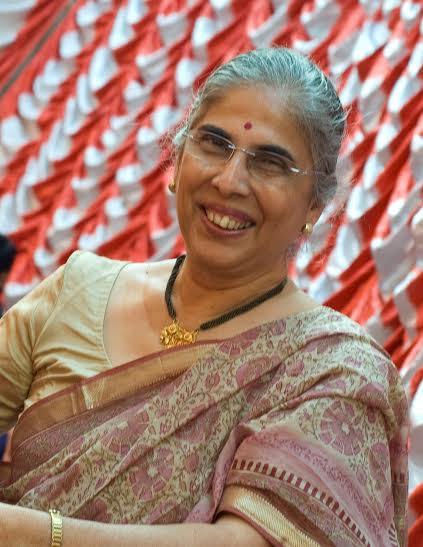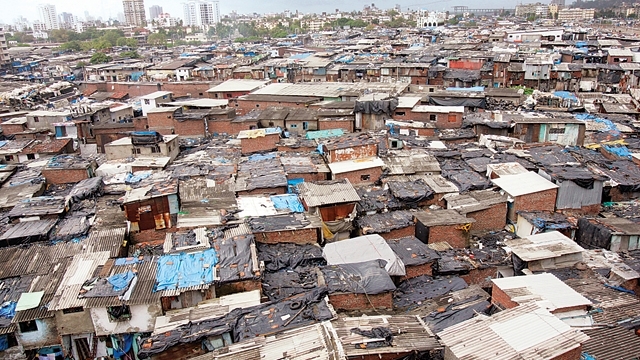
Inspiring Doctors-Saving lives in Dharavi, breaking one rule at a time
Dr Armida Fernandez has a link to Mumbai’s Dharavi which is as long as it’s deep. For in the 25 years she has worked in the nearby Sion Hospital, the services that she rendered and her courage have meant the difference between life and death for thousands of Dharavi dwellers.
The slum’s population bludgeoned during the 1970s when rapid urbanization brought migrants from all over India to Mumbai. Though actual figures are hard to come by, estimates put the number of Dharavi dwellers between 6 lakhs and 10 lakhs. The lack of adequate sanitation, use of unsafe water and trash issues have caused serious health issues in Asia’s biggest slum.

Dharavi- health issues abound
The Sion hospital which was opened in 1947 had dealt with the issues of Dharavi ever since the slum came into existence. In fact, its growth from a 50 bed facility during the 50s to a 1,400 bed facility today owes a lot to tackling the unprecedented health concerns of the surrounding areas.
Dr Armida recalls the 70s when the doctors saw a lakh patients every month. The patients who “were everywhere” “lined the hallways, wards and emergency room.”
Many patients had serious conditions and infections which could have been prevented with vaccinations, better infrastructure and more knowledge about hygiene and maternal & neonatal care.
Most alarming was the high number of deaths among children. Unnecessary deaths which could have been prevented. Deaths that still haunt the doctor.
The death of one little girl shows the dramatic nature of healthcare in the hospital during these times. The girl had serious breathing troubles when she was brought to the hospital. Though she was in urgent need of a ventilator, there was just one in the whole complex. Breaking protocol, Dr. Armida rushed to the emergency room and took the device. “I wanted to see her live,” she says. “I broke the rules many times to save someone’s life.”
In fact, breaking rules was necessary for the doctor to help modernize the public facility for the sake of Mumbai’s poorest. And the doctor’s success is evident from the fact that some of the measures have been replicated in hospitals around India.
The quest to save lives
It was when as a young doctor she went to give a presentation at a conference in N. India that the dire state of the hospital where she worked was brought home to her. When she read aloud the statistics for patients at Sion, the attendees were shocked, particularly when she told them that 77% of sick newborns in the hospital died.
Realizing that such figures were shocking even for India, she began investigating the reason for the deaths. She found that the babies’ death could be saved, that too without huge investment.
However, first of all, she had to give the expecting mothers and the newborn better care. So, in 1977 she started the hospital’s very first neo-natal ward. The doctor then began a series of never-before-tried low cost programmes.
One such simple measure was taking away all the incubators. For it was found that the boxes which were meant to keep premature babies alive were in fact killing them. The machines were old and dirty and the nurses- overburdened with tasks rarely got the time to clean them. Meaning, a high potential for infection.
Since the doctor couldn’t find money in her budget for new incubators, she brought a few boxes of 20 rupee lamps- the new incubator room was warmed by household bulbs. A makeshift arrangement but hygienic nonetheless.
But more preventive measures had to be taken. The doctor had wash basins installed in all rooms and stopped baby baths(at that point, 120 babies would be washed in the same tiny tub). She had the bottles removed too.
Another decision was to have no more formula. Going against hospital rules the doctor allowed mothers to visit the nursery to breastfeed. In fact, Dr. Armida’s biggest legacy is connected to breastfeeding: The Human Milk Bank. It was not just the first of its kind in India but also in Asia.
It was in 1989 that Dr.Armida opened the milk bank so that infants assuredly got essential nutrients in breast milk. It’s said that today, the Sion Human Milk Bank saves the lives of three dozen babies every day. Four such facilities are present in Mumbai and a push for putting up such facilities pan-India is being made.
Many innovations that Dr.Armida made, she did by breaking rules. But the irony is that many of these are now standard practices across Mumbai. Also, malnutrition among kids at Sion has been cut in half from what it used to be in the doctor’s early years- it’s below 30%.
Vaccination drives and better infrastructure mean that Sion has left behind the need to solve infectious disease crisis to tackling chronic diseases like cancer and heart ailment.
Dr. Armida has retired as Sion’s dean. However, she is still on board of the NGO that she founded in Dharavi- Society for Nutrition, Education & Health Action(Sneha). The work of educating and empowering the women of Dharavi with the right information and resources continue through the NGO.
Image credits: dnaindia.com